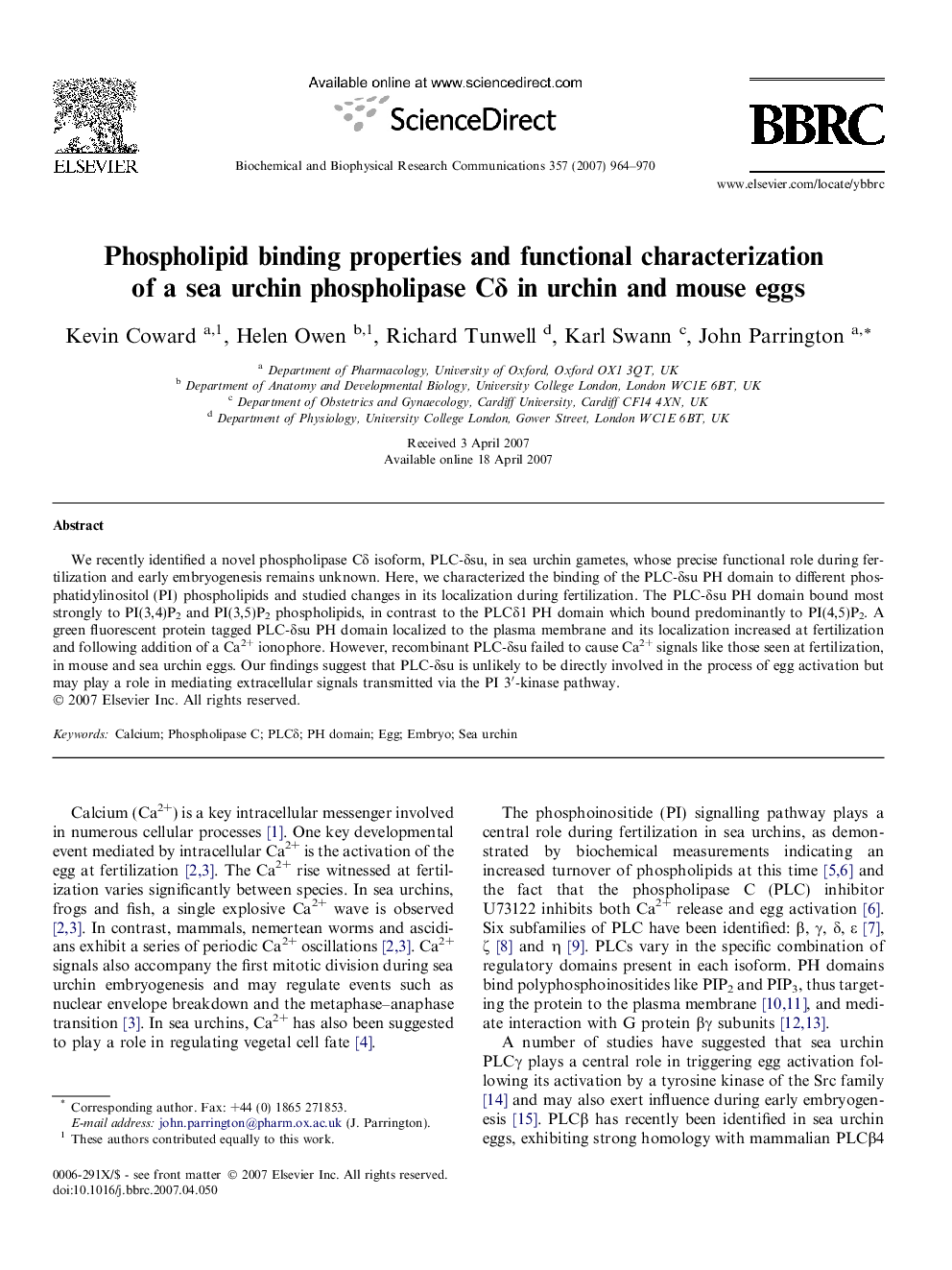| Article ID | Journal | Published Year | Pages | File Type |
|---|---|---|---|---|
| 1937961 | Biochemical and Biophysical Research Communications | 2007 | 7 Pages |
We recently identified a novel phospholipase Cδ isoform, PLC-δsu, in sea urchin gametes, whose precise functional role during fertilization and early embryogenesis remains unknown. Here, we characterized the binding of the PLC-δsu PH domain to different phosphatidylinositol (PI) phospholipids and studied changes in its localization during fertilization. The PLC-δsu PH domain bound most strongly to PI(3,4)P2 and PI(3,5)P2 phospholipids, in contrast to the PLCδ1 PH domain which bound predominantly to PI(4,5)P2. A green fluorescent protein tagged PLC-δsu PH domain localized to the plasma membrane and its localization increased at fertilization and following addition of a Ca2+ ionophore. However, recombinant PLC-δsu failed to cause Ca2+ signals like those seen at fertilization, in mouse and sea urchin eggs. Our findings suggest that PLC-δsu is unlikely to be directly involved in the process of egg activation but may play a role in mediating extracellular signals transmitted via the PI 3′-kinase pathway.
